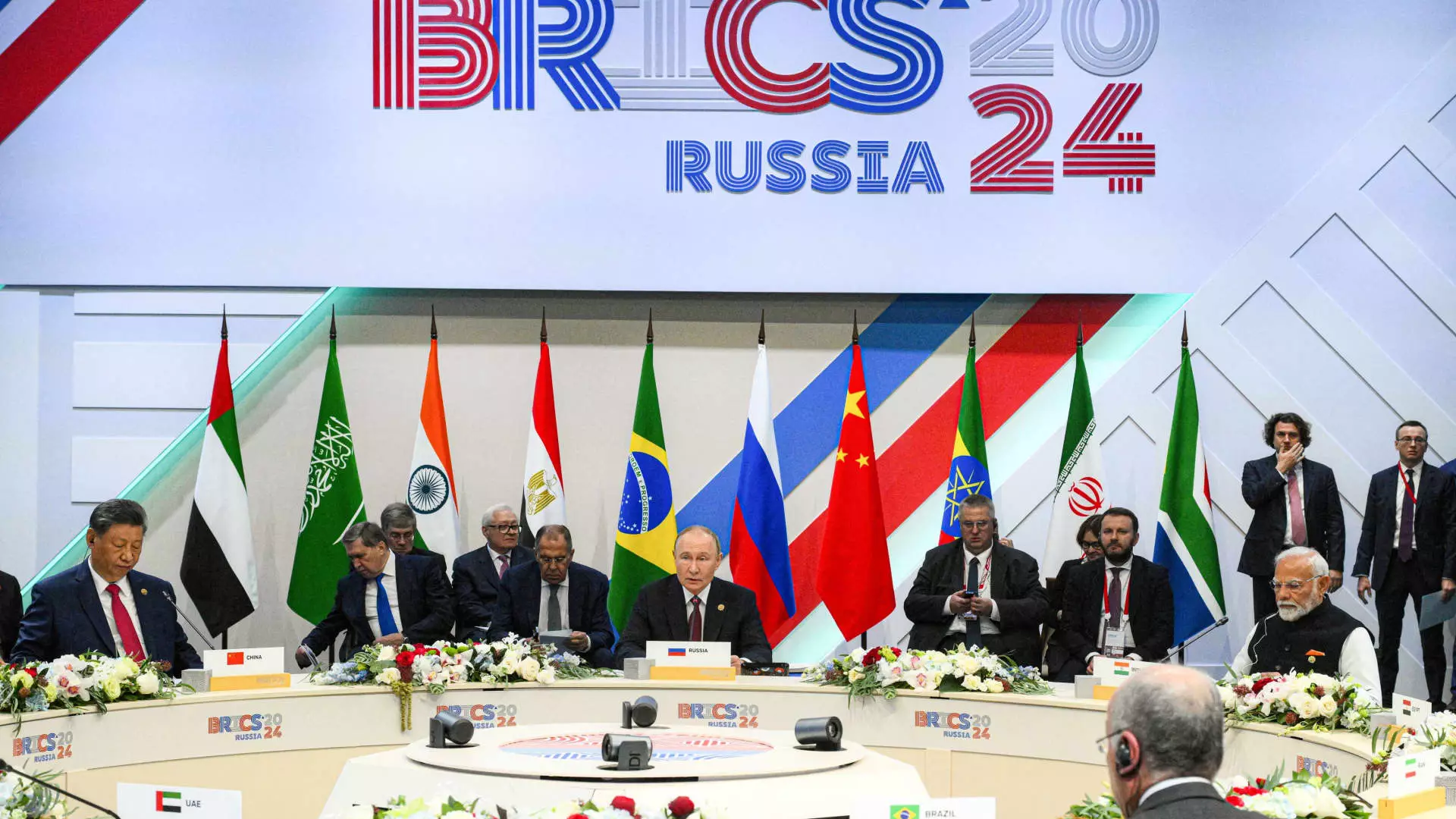In an increasingly interconnected world, economic policies are often linked with geopolitical strategies, and President-elect Donald Trump’s recent tariff threats against a coalition of nine nations raise significant concerns regarding the future of global trade and currency dynamics. The implications of these threats must be carefully assessed in the context of historical currency practices, the motivations behind emerging economies, and the overall stability of the international financial system.
On a notable Saturday, Donald Trump declared the potential implementation of 100% tariffs on countries within the so-called BRIC alliance—comprising Brazil, Russia, India, China, South Africa, Egypt, Ethiopia, Iran, and the United Arab Emirates. This provocative move was particularly aimed at nations that he perceived as attempting to undermine the supremacy of the U.S. dollar. Trump’s rhetoric represents a shift in the geopolitical landscape, as the BRIC nations express their frustrations over what they perceive as an overextended American monopoly on global finance.
The dollar currently holds a staggering 58% share of global foreign exchange reserves, and it continues to dominate international commodity transactions, particularly in essential goods like oil. However, the growing economies within the BRIC alliance have been vocal in their intentions to pursue “de-dollarization,” a strategic movement aimed at reducing reliance on the dollar in trade and seeking alternatives that align more closely with their needs.
The tensions surrounding the dollar’s supremacy can be viewed as a manifestation of a broader desire among emerging economies to rebalance power dynamics in international trade. Countries within the BRIC coalition have been yearning for a greater voice in the financial system, reflecting their economic growth and increasing influence on the global stage. They argue that America’s dominant position creates inherent disadvantages and vulnerabilities, especially during times of economic sanctions or geopolitical friction.
The BRIC nations’ interest in establishing a new currency or trading mechanism to dilute U.S. dollar reliance is potent, and Trump’s response—categorically rejecting any attempts at creating alternative financial systems—highlights a defensive stance. Leaders like Russian President Vladimir Putin have characterized U.S. dollar policies as “weaponized,” labelling it a strategic error that compels countries to explore alternative trade routes.
Trump’s social media statements vividly illustrate his assertive approach: he stated that any nation contemplating a new BRICS currency or seeking to unseat the dollar should “wave goodbye to America.” This display of bravado may resonate with some of Trump’s core supporters, but it elicits significant risks on the international front. His stance may not only reinforce existing fractures but also catalyze further collaboration among BRIC nations, enabling them to pursue joint financial initiatives more aggressively.
It is important to juxtapose Trump’s aggressive proclamations with empirical research, which shows that the U.S. dollar’s dominance is not under immediate threat. Recent analyses from respected institutions, such as the Atlantic Council, underscore the dollar’s stability in the near and medium term despite ongoing movements toward diversification in currency use among emerging markets. Trump’s tariff threats may invoke fear and uncertainty, ultimately backfiring and compelling nations to expedite plans for alternative frameworks rather than deter them.
Trump’s tariff strategies are not new; his previous threats included substantial tariffs centered on Canadian and Mexican imports. Such approaches have historically raised alarms regarding potential trade wars and reciprocity in tariffs. The fundamental question remains: how will these economic tactics affect broader U.S. trade relations and diplomatic posturing? Trump’s approach risks isolation, as countries like Canada and Mexico may find themselves compelled to align more closely with the BRIC nations to counterbalance U.S. pressure.
As international coalitions continue to form and develop under the shadow of American dominance, the potential for a multi-currency world looms. In this context, Trump’s warnings may serve to galvanize not just BRIC nations but also other countries seeking equitable trade practices devoid of coercive economic strategies. The formation of new alliances and non-dollar transaction frameworks may ultimately disrupt the longstanding hegemony of the U.S. dollar.
The geopolitical landscape is shifting, and Trump’s staunch defense of the dollar, coupled with his threats of severe tariffs, reflects both an assertive economic policy and a reluctance to adapt to changing global dynamics. As emerging economies move towards establishing more independent financial systems, the long-term implications of Trump’s tariff threats could lead to a reconfiguration of global trade that may marginalize the U.S. position rather than consolidate it. The evolving alliance dynamics and economic strategies will need vigilant monitoring, not only from policymakers but also from entities invested in the stability of the global economy.


Leave a Reply